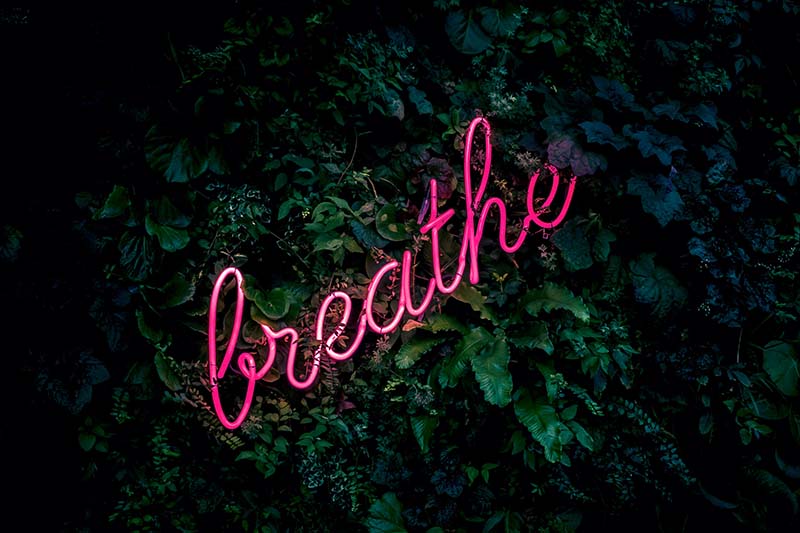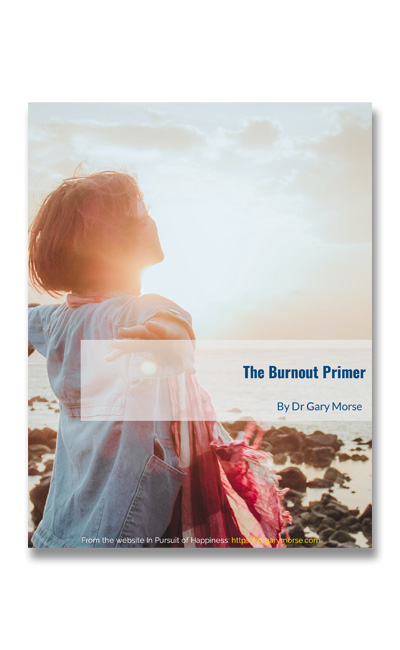Organizational and supervisory practices can go a long way in reducing employee stress and creating a healthy workplace environment.
But not all businesses and managers follow best practices, as we know from our own work histories as well as research. Rather, many engage in practices (albeit often unwittingly) that ratchet up work stress and trigger rampant burnout.
And even in the healthiest of environments, work sometimes generates significant stress—stress that can trigger burnout.
So it is imperative that individual employees, even in the best of workplaces, develop skills and strategies to prevent burnout and promote work well-being.
BREATHE—A Helpful Approach
BREATHE (Burnout Reduction: Enhanced Awareness, Tools, Handouts, & Education) is a set of skills and strategies that multiple evaluation and research studies have shown helps workers reduce burnout over time.
I developed BREATHE in the late 1990s after witnessing a number of talented, caring employees suffer from burnout as they sought to serve people who struggled with mental illness, substance disorders, trauma, and extreme poverty, often including homelessness. At the time, I also had recently recovered from burnout myself after the tragic, violent death on the streets of a community mental health client with major mental illness.
Although BREATHE was “new” as a program, I drew from a number of established psychological concepts and also spiritual practices, some of which have been used for millennia in religious traditions, to create a burnout prevention and well-being program.
I have continued to tweak and enhance the program over the past 24 years to increase its effectiveness. In the process, the research and development of BREATHE has benefited from collaborations with other psychologists, including Drs. Michelle Salyers and Angela Rollins of Indiana University-Purdue University-Indianapolis and Maria Monroe-DeVita of the University of Washington.
The program has been used over the years by a variety of workers, going far beyond its original target audience of homeless service providers, mental health staff, and substance abuse treatment professionals.
In particular, health professionals (physicians, nurses, etc.), probation and parole officers, correctional facility workers, graduate students, teachers, public librarians, employment workers, corporate technical professionals and managers have learned and used BREATHE, which is best provided in a training workshop of about 6.5 hours.
Other workers can also benefit from the approach.
Core Ideas
Burnout results from work stress. More specifically, burnout often occurs when stress is greater than the person’s individual coping resources (and organizational-supervisory supports).
A basic idea in BREATHE is the “functional analysis” framework, which is also used in other behavioral health conditions. Specifically, individuals are taught to identify their personal “triggers” of burnout, their individualized “warning signs” and then to develop a set of personal coping skills to reduce or prevent burnout amidst triggers and warning signs.

By Tim Mossholder on Unsplash
Workers are taught a wide range of different strategies to deal with stress, reduce burnout, and improve their well-being. Individuals then pick and choose those strategies that work for them as individuals, since no one skill works for everyone. In addition, employees are encouraged to test out a variety of strategies, since it is better to have more than one “tool” to reach for in their personal toolkit of coping resources.
Finally, a key premise is that people want more from work than eliminating burnout—or just a paycheck. Most people enter a field because of a sense of purpose or a personal dream. Overcoming burnout, and remembering one’s personal dreams, has served as a transformative gateway for many individuals to experience greater happiness and fulfillment at work—and in life
Core Principles
BREATHE is guided by eight key principles. Three of these are important to highlight at present:
- Although we are affected by external conditions—such as organizational culture—we each have a responsibility for the state of our personal well-being at work.
- Setting a personal intention to overcome work stress and improving our well-being is critical for preventing burnout.
- Self-care is essential for overcoming burnout and improving well-being.
Seven Critical Skill Areas
BREATHE participants learn skills and strategies in seven key areas. Most of these skills are learned not simply by explanation, but also by “trying them out” experientially in workshop exercises.

By Deniz Altindas on Unsplash
Skill Area 1: Establishing Core Contemplative Practices. Participants learn a handful of exercises that create the “relaxation response,” as Dr. Herbert Benson termed it. The relaxation response, when done on a regular basis, is effective for producing a number of physiological (e.g., lower blood pressure, reduced muscular tension) and emotional and spiritual (e.g., greater sense of life satisfaction, increased sense of purpose and spirituality) benefits.
Contemplative practices taught in BREATHE include various deep breathing methods, mindfulness, meditation, and imagery exercises.

By Medien Sturmer on Unsplash
Skill Area 2: Fostering a Healthy Mind. Participants learn cognitive behavioral techniques to reduce stress and burnout. They also experiment with positive psychology strategies, some of which have their roots in spiritual practices (e.g., acceptance, gratitude, compassion), to build their resilience and open up positive but realistic thinking about work.
Skill Area 3: Rediscovering Meaning, Values, and Joy. The ability to personally discover, create, and stay focused on meaning creates greater fulfillment and builds resilience under the most difficult of situations, as Victor Frankl described years ago. Participants engage in an exercise to rediscover their sense of meaning in work. In addition, other exercises help participants to find and follow their personal values, and their sense of joy—since stress and busyness often makes us forget these critical aspects of ourselves.

By Pop Zebra on Unsplash
Skill Area 4: Reclaiming Your Time. Many of us feel overwhelmed by our schedules with the sense that we have no time to do our work tasks, especially the most important activities. Clearly, some workers have more discretion than others, but a key premise is that we all have some ability to influence our activities—and our experience of our time.
Participants learn strategies in three key areas to manage—or reclaim—their time: setting boundaries, organizing, and changing the way they approach (and therefore experience) time.
Skill Area 5: Improving Physical Well-Being. Participants learn several strategies (e.g., arm chair yoga, movement, sleep hygiene, and visualization-relaxation) to improve a sense of physical health.
Skill Area 6: Creating Right Relationships/Social Connections. Social support and relationships are critical factors in physical and mental health but their role is often overlooked in the workplace, especially as they affect burnout and well-being.
Employees learn strategies in four areas to improve their social support and relationships: (re)connecting with positive people, improving social skills, asking for support, and dealing effectively with conflict.

By Toa Heftiba on Unsplash
Skill Area 7: Using “Mini-Retreat Rituals” for Renewal. A short list of options is offered to participants to create and use quick “rituals” for renewing themselves amidst a busy day.
In addition to the seven key skill areas, participants are also guided to reflect upon—and plan how to use more frequently—those personal activities that bring relaxation and renewal but which often get lost in hectic days. For example, workers have discussed the importance of increasing (or getting back to) activities such as listening to music, walking the dog, watching a sunset.
Putting It All Together
At the end of the workshop, participants review the various strategies and skills they have learned and create a personal action plan for putting into regular practice those activities that buffer stress, prevent burnout, and add a greater sense of meaning and well-being to work and life.
For More Information
Individuals seeking to learn more about the BREATHE program or its specific strategies can contact me for further information, including about an upcoming book.
In addition to the numerous workshops we have conducted, my colleagues and I have also trained other professionals to conduct BREATHE burnout prevention. Most recently, we trained staff at Illume: The Behavioral Health Center of Excellence to provide the BREATHE program.
For organizations seeking to receive a BREATHE workshop at your organization, please contact The Director of Training at Illume, Julie Blanco, LCSW or myself.
Top photo by: Fabian Moller on Unsplash



Follow Me: